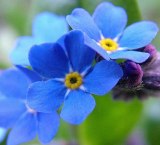|
Gold was officially designated the state mineral of Alaska in 1968. The Alaska Gold Rush brought thousands of adventurers and schemers to Alaska and the Yukon in the mid 1800's and again early in the 1900's when gold was discovered near Fairbanks. They all came dreaming of riches - their dramatic frontier stories are both triumphant and tragic. Gold has physical and chemical properties that make it precious for more important things than jewelry, coins, or even art. Gold is stable (rarely combines with other elements to corrode), very dense but still extremely malleable, and only silver conducts electricity better than gold. This makes gold a critical resource in dentistry, medicine, and scientific and electronic instruments.
The discovery of gold brought thousands of people to Alaska and the Yukon. It began in 1849 with a Russian mining engineer on the Kenai Peninsula. It continued to 1914 when gold was discovered in Livengood near Fairbanks.
The Klondike Gold Rush, sometimes referred to as the Yukon Gold Rush, drew people from all over the world to Dawson City in the Klondike region of north-western Canada after gold was discovered there on August 16, 1896. The gold rush lasted only a few years, essentially ending in 1899. Spurred on by newspaper campaigns, at its height in late 1897 to mid 1898, about one hundred thousand people, mostly novices to prospecting, headed for the gold fields.
The Klondike Gold Rush is remembered for the hardship endured by the would-be prospectors just by getting there through snow, over mountains and down rivers, immortalized by pictures of their ascending of the Chilkoot Pass, by books like The Call of the Wild, and films like The Gold Rush. Few got rich, and it is estimated that the money spent on the journey exceeded the value of gold found during the rush.It is often called the Alaska Gold Rush because the gold field belonged to the peninsula, which includes the main part of Alaska, and a majority of the prospectors disembarked at Alaskan ports. Further, it came to an end when a real Alaskan gold strike, the Nome Gold Rush (1899–1909), drew away many Klondikers and thereby created an additional connection.
Yet another name sometimes applied is the Last Great Gold Rush, following other major 19th century ones such as the California Gold Rush (1848–52) and the Australian Gold Rush (1851-69), among the biggest of all time. Unlike its Californian and Australian counterparts, only a few of the Klondike prospectors chose to stay in the area where gold was found after the rush. The height of the Klondike Gold Rush was known as The Klondike Stampede. It did not only include would-be prospectors but also people who supplied them along with journalists and photographers who wanted to document the migration.
Supplies played a key role since the "stampeders" had to bring a ton of equipment with them to be allowed entry to Canada as a precaution to avoid starvation in the gold fields. Moving the supplies was a gradual process that made travel across land difficult. The most important trails went from the ports of Dyea and Skagway on the Southeast Alaska coast. Prospectors could here take either the Chilkoot trail from Dyea or the White Pass trail from Skagway to the head of Yukon and from here sail to the Klondike in self-made boats.
Not all persevered, it is estimated that more than half of the stampeders turned back or stayed behind to supply the rest. They could do so in fast growing towns and tent camps along the routes as well as in Dawson and at high prices too. Dawson City did not exist before the rush. By 1897 it had 5,000 inhabitants and at the height in summer of 1898 nearly 30,000. Because of its isolated location, dense population, low sanitary standard and poor quality of building, it was challenged by low supply, epidemics and fires, but kept law abiding by the police. The fortunate, who found gold, could spend it lavishly in saloons while others went hungry.
After the gold rush concluded, the town shrank and by 1912 only 2,000 inhabitants remained.The Klondike was not the first place along the Yukon that gold had been found, however, the goldfields at Klondike were richer than most ever seen. Mining for gold was not easy in the Klondike since the ground was frozen all year and had to be thawed before mining. Nevertheless production increased and reach its maximum in 1903. After that, claims that were no longer profitable to the original owners were sold and mined by large scale methods.
Since the rush, the Klondike area has continued to be mined with pauses depending on fluctuations in the gold price. In 2011 family-run gold mines still exist, though they work bigger claims and use heavier equipment than the original Klondikers. An estimated total of 1,250,000 pounds (570,000 kg) of gold had been taken from the Klondike area by 2005.
|








